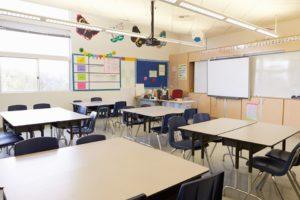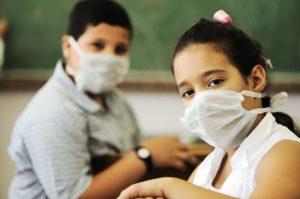By Recker McDowell —
School districts and universities across Arizona and the country are all wrestling with when and how to reopen for classes.
Those decisions are not easy with COVID-19 and Arizona posting the second highest number of cases per capita in the U.S.
Teachers and staff are worried about returning to classrooms. Some parents and students are also concerned. Other parents are facing serious conundrums of how to balance childcare and kids at home with jobs. Some students rely on free breakfast and lunch programs for their only nutritious meals.
There are no easy, one-size-fits-all answers. Like with seemingly everything these days, there is a strong penchant to retreat and throw grenades from our respective political and social media corners. Our visceral reactions to Donald Trump, Tucker Carlson, CNN, and Joe Biden have also arisen at the state and local levels as we navigate COVID-19 and all its impacts including schools.
Teachers, students, and their families deserve much better than the ‘I am right, and you are wrong’ discourse we see on social media and cable news.
The reality is Arizona has a concerning number of COVID-19 cases. The state has 2,068.2 cases per 100,000 residents. Only New York City (2,656.4) has a higher rate. California, for example, has a per capita COVID rate of 972.5 per 100,000 residents.
Arizona’s COVID fatality rate ranks better — 16th nationally per capita (40.59 per 100,000 residents compared to 278.7 in New York City and 176.3 in New York), according to the U.S. Centers for Disease Control.
The reality is Arizona and the country need to see the COVID situation improve so we all have more confidence to gradually get back to normal activities whether that is travel or sporting events or going back to school.
As things stand now, school districts and universities in Arizona and other states should be taking the most reasonable path for the new school year. That seemed to be trying to offer the most flexibility to students and teachers. An ideal situation is where students and teachers can pick between distance/online and being in the classroom (or a hybrid of both to help with social distancing). Many schools (including the Scottsdale Unified School District) have been working hard on that path.
We have seen that kind of creativity and flexibility with workplaces. Most businesses (if they can) are allowing employees to work at home leveraging technology.
More flexible and more technology-oriented teaching and learning will certainly be even more part of education models in the future. Schools and colleges that are innovative and creative now stand to have competitive advantages (including for their students) going forward.
The challenge is the current COVID situation with schools in Arizona potentially getting ready to open next month.
The flexibility to choose online or in-person classes seemed more plausible before the recent rise in COVID cases. Now, schools and universities will have to figure out how and when they can open classrooms and give teachers, students, and parents confidence about their collective health. There is not a lot of time to figure that out and like with other COVID-19 matters there must be a balance between public health and safety and the economy and jobs.
All this requires leadership, listening, collaboration and consensus — and not retreating into political, partisan, and social media corners.
Reality commands it.

